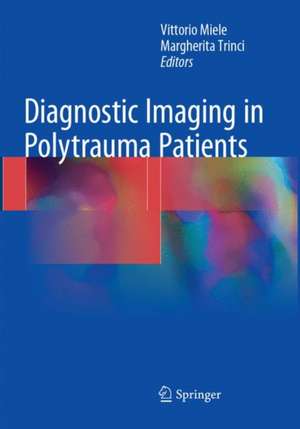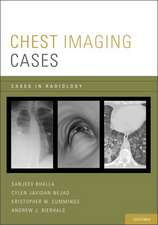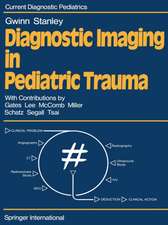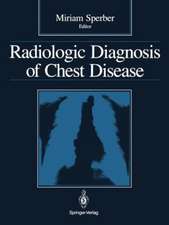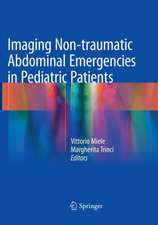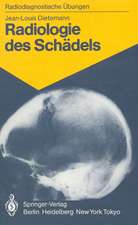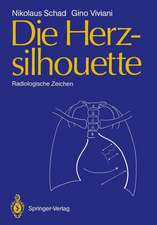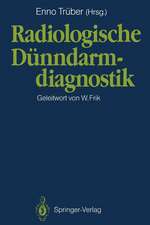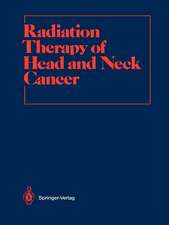Diagnostic Imaging in Polytrauma Patients
Editat de Vittorio Miele, Margherita Trincien Limba Engleză Paperback – 30 aug 2018
This book provides comprehensive information on Diagnostic Imaging for polytrauma patients. It provides extensive and detailed explanations of the semiotics of traumatic injuries, the correlation with the trauma’s mechanism of action, and the meaning and appearance of prognostic indicators. The book begins with a discussion of the management of polytrauma patients. Particular attention is given to the role of radiology in management, and each chapter includes an assessment of the radiological findings to be used as a clinical decision-making tool. Several typical cases are shown, supplemented by a wealth of images. The book offers a useful tool both for radiologists, who will find in it a valuable guide to correctly diagnosing traumatic injuries, and for clinicians, who will come to better understand the findings of the diagnostic tests performed on their patients
| Toate formatele și edițiile | Preț | Express |
|---|---|---|
| Paperback (1) | 886.20 lei 38-44 zile | |
| Springer International Publishing – 30 aug 2018 | 886.20 lei 38-44 zile | |
| Hardback (1) | 1320.83 lei 3-5 săpt. | |
| Springer International Publishing – 24 noi 2017 | 1320.83 lei 3-5 săpt. |
Preț: 886.20 lei
Preț vechi: 932.84 lei
-5% Nou
Puncte Express: 1329
Preț estimativ în valută:
169.60€ • 176.41$ • 140.01£
169.60€ • 176.41$ • 140.01£
Carte tipărită la comandă
Livrare economică 11-17 aprilie
Preluare comenzi: 021 569.72.76
Specificații
ISBN-13: 9783319872223
ISBN-10: 3319872222
Pagini: 543
Ilustrații: XVIII, 543 p. 467 illus., 217 illus. in color.
Dimensiuni: 178 x 254 x 33 mm
Greutate: 1.13 kg
Ediția:Softcover reprint of the original 1st ed. 2018
Editura: Springer International Publishing
Colecția Springer
Locul publicării:Cham, Switzerland
ISBN-10: 3319872222
Pagini: 543
Ilustrații: XVIII, 543 p. 467 illus., 217 illus. in color.
Dimensiuni: 178 x 254 x 33 mm
Greutate: 1.13 kg
Ediția:Softcover reprint of the original 1st ed. 2018
Editura: Springer International Publishing
Colecția Springer
Locul publicării:Cham, Switzerland
Cuprins
Clinical management of polytrauma patients.- Traumatic injuries: mechanisms of lesions.- Head trauma.- Maxillo-facial injuries.- Cervical spine.- Neck vascular lesions.- Airways injuries.- Lung/pleural injuries.- Aortic injuries: diagnostic imaging.- Aortic injuries: interventional radiology.- Thoracic wall and Diaphragm injuries.- Dorsal and lumbar spine injuries.- Hepatic injuries.- Pancreatic injuries.- Splenic injuries.- Intestinal injuries.- Adrenal injuries.- Renal injuries.- Pelvic injuries: bone.- Pelvic injuries: vascular/visceral.- Abdominal trauma: interventional radiology.- The follow-up of patients with thoracic injuries.- The follow-up of patients with abdominal injuries.- Injuries of the limbs: bone lesions.- Injuries of the limbs: vascular lesions.
Recenzii
“The intent is to provide a comprehensive review of imaging findings in trauma patients. The book focuses on patients with more than one site of injury and addresses patterns of injuries that are often found together. The authors identify radiologists as the primary audience and, indeed, the book is appropriate for this audience. ... This is a thorough review of imaging findings in trauma that is well written with excellent images.” (Tara M. Catanzano, Doody's Book Reviews, April, 2018)
Notă biografică
Vittorio Miele has been working at the University Hospital Careggi in Florence since October 2016 as Chairman of both the Emergency Radiology Unit and the Radiology and Laboratory Department.
For the previous fourteen years, he served as Chairman of the Department of Emergency Radiology at S. Camillo Hospital in Rome.
He is a past President of the Italian College of Emergency Radiology and is currently a Member of the Board of the Italian Society of Radiology (SIRM). He has authored over 300 papers and edited several monographs.
Margherita Trinci works at S. Camillo Hospital in Rome in the Department of Emergency Radiology.
She is Senior Radiologist in the fields of Emergency Radiology and Pediatric Radiology, she is also a Member of the Board of the Italian College of Pediatric Radiology.
She has authored over 50 papers and co-edited several monographs.
For the previous fourteen years, he served as Chairman of the Department of Emergency Radiology at S. Camillo Hospital in Rome.
He is a past President of the Italian College of Emergency Radiology and is currently a Member of the Board of the Italian Society of Radiology (SIRM). He has authored over 300 papers and edited several monographs.
Margherita Trinci works at S. Camillo Hospital in Rome in the Department of Emergency Radiology.
She is Senior Radiologist in the fields of Emergency Radiology and Pediatric Radiology, she is also a Member of the Board of the Italian College of Pediatric Radiology.
She has authored over 50 papers and co-edited several monographs.
Textul de pe ultima copertă
This book provides comprehensive information on Diagnostic Imaging for polytrauma patients. It provides extensive and detailed explanations of the semiotics of traumatic injuries, the correlation with the trauma’s mechanism of action, and the meaning and appearance of prognostic indicators. The book begins with a discussion of the management of polytrauma patients. Particular attention is given to the role of radiology in management, and each chapter includes an assessment of the radiological findings to be used as a clinical decision-making tool. Several typical cases are shown, supplemented by a wealth of images. The book offers a useful tool both for radiologists, who will find in it a valuable guide to correctly diagnosing traumatic injuries, and for clinicians, who will come to better understand the findings of the diagnostic tests performed on their patients
Caracteristici
Presents a comprehensive overview of all diagnostic procedures used in polytrauma patient management Explains the radiological semiotics of traumatic lesions and correlation with the mechanism of action of the damaging force Shows a correlation between diagnostic findings and treatment decisions, particularly with regard to the identification of prognostic indicators
